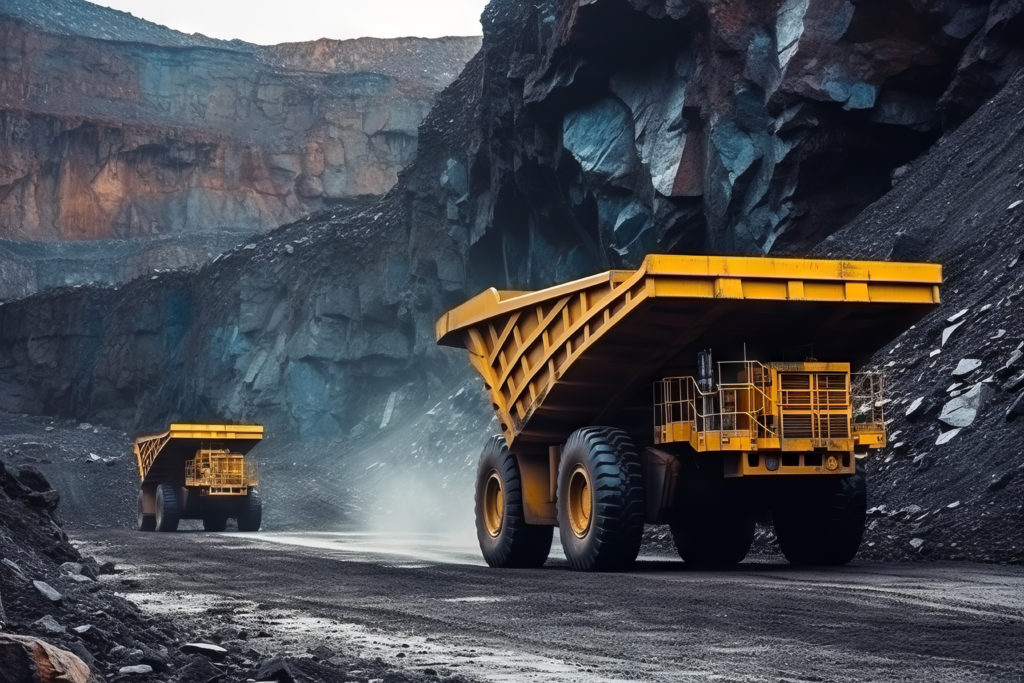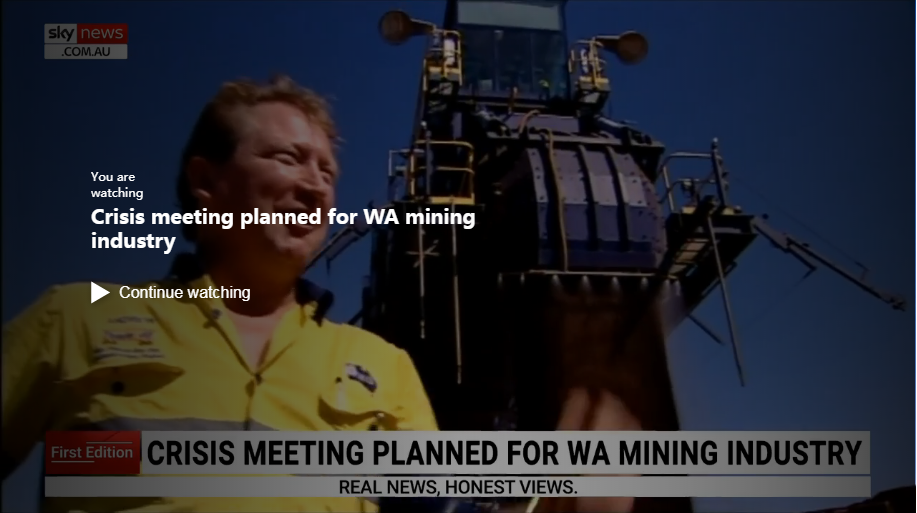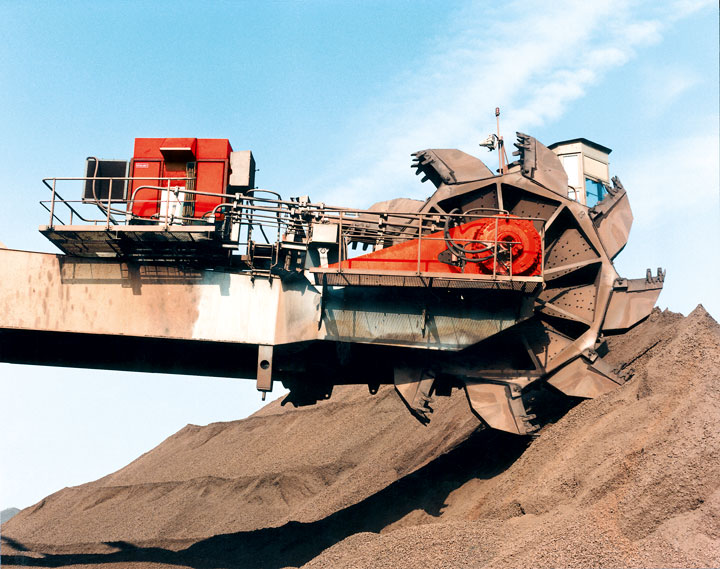In conversation with Scott Winter: Opportunities and challenges facing the mining industry in 2024

This year will see continued opportunity and ongoing pressures in the global mining sector as the world transitions to new energy sources, with risk management among its perpetual challenges. To understand key trends in the mining sector, Matt Lee, principal at Burford Capital, spoke with Scott Winter, CEO of Critical Minerals Group, an Australian vanadium mining and battery metals company focused on meeting the growing demand for minerals critical to ensuring a carbon neutral future.
ML: Tell me what you see as the key opportunities and challenges in mining and metals in 2024.
SIGN UP FOR THE AUSTRALASIA DIGEST
SW: One of the significant challenges we have is the fundamentals around infrastructure and services. The development of new and emerging minerals in these mineral zones are in different locations. Some of those are in regions where there’s no power or no consistent or significant amounts of power. There are areas of regions where there’s no water. So, one of the very simple fundamental issues around development is around the services available to build some of these mines.
It’s becoming increasingly hard to fund projects. It’s no surprise that any project with coal or fossil fuel is very difficult to find funding for, debt or equity, to develop projects. Whereas, as an example, you’ve seen the hype around lithium, becoming very easy to raise capital, equity and even debt, to bring on some of those projects.
The industry is growing in complexity, it’s growing in its requirements for technical needs across the board, whether that’s equipment or processing technology or it’s integration in society or it’s the environmental controls we need to put in place. Along with that comes skilled labor. Having maintenance capabilities to fix equipment on the ground is a challenge and can shut a mine. Having the skilled labor and the technical capability with some of ourprojects, which are now running autonomous trucks, that’s a different skill set that we require, and we have to bring that through the industry. There’s a real shortage in skills.
The importance around social engagement and environmental controls, again, that’s a skill set we need to build and bring those people into the industry. It’s not as much as going to university or tech college or whatever it may be to build the skills. Some of these developments in the mining industry are in areas where attracting people to those regions is difficult.
For projects to be developed these days you need the requisite approvals and environmental studies to be in place. Australia is a great place to develop projects. It’s very regulated, very process driven. But to get a project delivered and developed these days, it’s five to eight years once you’ve got an application in process, and even longer from the inception of finding a resource in the ground. So that is a big challenge—speed to market when you’ve got a growing market and need out there, certainly for critical minerals. Developing a project from scratch takes a long time and that is a big challenge that the industry is facing.
ML: How is the energy transition affecting metals and mining companies in Australia? Obviously, it’s a huge part of our economy down here. Is more investment needed to fund further exploration and development in the sector? And if so, where’s that coming from?
SW: I think now is where we to do need a lot more funding into the exploration space. Queensland in particular is very underexplored and there’s some terrific resources. Combing back to vanadium, it wasn’t explored. Where’s the money coming from? Generally, it comes from mums and dads and interested and sophisticated investors at the moment for exploration. The equity market is a bit flat lately, but the reality is that’s where a lot of the early exploration work comes from. Small companies that have a real focus, have a vision and have some good knowledge find and explore some of these minerals and some great deposits.
Some great lithium deposits were recently found, some copper as well and the vanadium as I said, and many other minerals out there as well. It really takes little guys to get there, but I think you’re finding some of the larger groups that are keeping a very careful watchful eye on the smaller groups that are doing this exploration, then probably jumping in a little earlier. You find that the big corporates are jumping in and supporting and taking a farming agreement or taking the companies out to further develop those resources.
ML: How have inflationary pressures impacted the mining sector and particularly technology development? Is the high cost of debtlimiting the availability of digital tools that can accelerate productivity?
SW: Theinflationary pressures that have come post-Covid have affected the mining industry’s ability to do things. Labor has gone up, steel for parts for equipment has gone up, skilled labor for technology has gone up, general parts and commodities to develop things and keep your operations running have all gone up. The cost basis has significantly increased. I couldn’t put a number to it, from a base to now, but it’s not ones and two percents, it’s in the tens that have increased over the last three to four years. That has a serious impact on the cost of production. It erodes your margins. It affects yourability to raise capital.
Is it inhibiting? I think it’s probably slowing some of the things that we’re doing from a technology perspective. Technology and some of the emerging technical services are really adding value. In exploration, the emergence of AI has had a really positive impact on finding resources, just mining some of that data that we’ve got out there.
Technical progress in Australia is right at the forefront of mining and excellence. We’re certainly believers of continued investment in that space to bring value but it’s starting to cost more, and you’ve got to pick your battles or pick the ones that you want to invest in. But I think we’re not looking at the cost base and the increase in cost base as stopping things. It’s just making us a bit more particular and picky as to what we do back.
ML: What I think is fascinating, is that far from just digging materials out of the ground and selling them overseas across the globe, and you hit on this point, the expertise that we have in the industry in Australia is also being sold overseas or utilized overseas.
SW: Particularly the Australian mining industry has had a long history in exploring and developing resources. And that’s built a terrific backbone for our industry, our learning centers, bringing new people and technology into the industry. And I’m not only talking about mining in the sense of extracting minerals out of the ground, but also the beneficiation and processing of all that material. We’re leaders in coal and iron ore, but copper and nickel, extraction of gold, and some of these deposits are very tricky, very difficult to extract. We’re really getting on top of the extraction and processing or beneficiation of lithium, which is now very prominent.
Western Australia and the other parts of Australia have got some significant resources and the same back into the vanadium space, which we’re operating again. We’re building brand new flow sheets, which are brand new IP. A lot of that is because of the technology and the backbone that we’ve got. A lot of that gets exported over, and Australians have very rich and great relationships with the rest of the mining fraternity across the world.
I think we build good capability in Australia, we foster it, we nurture it, we support it and the states across Australia really value that capability and I think the world does too. Having Australian industry people in your operation across the world is seen as a benefit; not taking the value away from other countries and their expertise, but I think that Australians bring a certain expertise with them.
ML: What are the key areas where companies in the mining sector may face potential disputes in the future? For example, do you see increased risk to the sector from geopolitical factors, such as the trend towards nationalization in some countries?
SW: It’s becoming ever more prominent. Nationalization is quite significant in parts of Africa. Africa is a very rich resource, rich continent, and lots of the continent is being developed, but there are some areas that are a little bit trickier, from a safety perspective and some environmental perspective. Some of the fundamental infrastructure like power and water utilities just don’t exist there. But some of those countries are becoming a lot more aware of the resources they’ve got and making sure that there’s a balance between bringing external support in to develop and take the benefits of royalties or taxes and those sort of things into the country but not giving away all their resources.
So, there are countries that are just working themselves to hold on to a lot more of their own resources. Parts of Asia are similar in that regard.
But some of the other disputes facing companies and service industries across the world are fundamental ones and as simple as labor disputes. There’s a balance as inflation comes on, then that hits the labor market, so being sure that people have got jobs. Are jobs going to local people? Are they getting paid or remunerated the right amounts? And disputes in the labor sense are becoming quite prominent just to rebalance because the cost of living is going up. That’s a challenge that a lot of industries are facing.
One of the other major issues we’re facing in companies I’m involved with is contracting. A lot of new emerging operators are using external services to support their business, whether it’s contract mining or developing construction. And you’ve got to be completely aware of how you engage those parties. My strong philosophy with engaging contracting and services parties, partly because I’ve been on both sides of the fence is, if you’re going to engage a party, look at them as a partner.
They are with you to support you to develop what you want in the way you want it. And if your values are aligned and your outcomes are aligned, then partner and really work with those groups and then you will have fewer disputes.
One of the other significant disputes that may arise in most of the cases when you’re developing projects are around approvals. Now, if you look at probably the worst case, developing a coal mine in an environmentally significant area, then even though your coal mine may get approved through the appropriate process through state and federal government—it’s done all the studies and it ticks all the boxes—there are appeal avenues for groups to ensure that you don’t get developed. There’s a lot of disputes that arise out of approvals that people don’t agree with, and you find yourself in the Land and Environment Court.
ML: You’ve been in the industry a very long time and have significant experience with a number of those risks you identified. Are there tools you’re deploying on the front end rather than running into disputes or problems on the back end?
SW: You live and learn by your experiences, and you don’t want to repeat them. The engagement process, whether it’s with your labor, whether it’s with the union, whether it’s with industry groups, social groups, environmental groups, traditional owner groups, contracting businesses; if you are engaging, really engaging in a not a master-servant relationship but a partnering relationship, then you stand yourself in a lot better stead in the long run.
A lot of the reasons disputes are occurring is because of something that either wasn’t explained or wasn’t detailed well enough, and there’s a difference in opinion, and then there’s a dispute. You really have to put a lot of effort up front to get it right, and then keep working through it. Don’t defer, don’t push issues down the track.
I developed a coal mine in a very prominent area in New South Wales, five to seven years ago. I look back at the success of that project. The most significant thing was the fact that we were present and engaged early. We engaged every stakeholder in that area. There are over 200 traditional owner applicants in that area, so we engaged as many of those as we could. We sat on the porches of people’s houses that were in the region that we knew were going to be affected by light or noise or dust. We engaged the local chamber of commerce and kept everyone informed early. So, really being present, engaging all these stakeholders early and being present to the extent. Now, it’s not always possible. You’re always going to be in a situation where you try and you’re not going to get the same response back, but at least you gave it a go. But don’t sit back; disputes sometimes occur because of complacency.
-
Doubling The Critical Mineral Potential Of Saudi Arabia
In Saudi Arabia, a land endowed with rich natural resources, but especially reno···
-
Wyoming awards $16m grant for coal-to-hydrogen and CCS project
Babcock & Wilcox (B&W) and Black Hills Energy have received a $16m grant···
-
AQC secures $60m for Dartbrook coal mine restart
Australian Pacific Coal (AQC) and its joint venture (JV) partner Tetra Resources···
-
Crisis meeting planned for WA mining industry
Resources Minister Madeleine King is expected to hold crisis talks with miners o···
Exhibition address:China International Exhibition Center (CIEC)
- Doubling The Critical Mineral Potential Of Saudi Arabia
- Wyoming awards $16m grant for coal-to-hydrogen and CCS project
- AQC secures $60m for Dartbrook coal mine restart
- Crisis meeting planned for WA mining industry
- Global inventory of world’s mines needed – researchers
- Alliance Resource (ARLP) to Bring Innovative Motor Technology






 2024 Beijing International Coal & Mining Exhibition
2024 Beijing International Coal & Mining Exhibition

